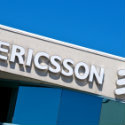
A slump in Ericsson's share of the Chinese mobile market looked inevitable last week when Börje Ekholm, the Swedish vendor's CEO, told his investors to brace themselves for a punishment beating meted out by Chinese authorities. China Mobile, the country's biggest operator, has today awarded Ericsson just 2% of the work for the next phase of its 5G rollout, down from 11% in phase one.
Ericsson's crime was to be as undeniably Swedish as Abba. It has become unpopular in China since last year, when its government banned the recipients of Swedish 5G licenses from building their networks with Chinese vendors Huawei and ZTE. Fearing the geopolitical consequences, Ekholm lashed out at his government's decision in vain. This week, he paid the price for its move.
It is not over yet, either. In its short statement about the China Mobile contract award, Ericsson notes that China Telecom and China Unicom have yet to announce the results of their own tenders. If it does pick up any work with those companies, it expects this to be "in a similar range" to the China Mobile deal.
The obvious retaliation by the state-controlled Chinese operator is a setback for Ericsson, but not an unmitigated disaster. Last year, only about 8% of its revenues were generated in China, and sales to Chinese customers dropped by 60% in the recent second quarter, to about 1.7 billion Swedish kronor ($200 million). Ericsson has far less to lose in China than Huawei does in Europe, where the Chinese vendor has previously made more from 4G sales than its Nordic rivals. In most other parts of the world, Ericsson is thriving.
If China wanted to punish Ericsson, why not ban it outright? Possibly because excluding Westerners would leave Chinese operators entirely at the mercy of domestic vendors, to the disgruntlement of telco executives with more interest in supplier diversity and profits than geopolitics. Possibly because of some need for interoperability with networks built by Ericsson last year. And possibly because it allows China to hold some ammunition in reserve.
A statement released in Mandarin by China Mobile, and analyzed by Telecoms.com, Light Reading's sister publication, shows most of the work lost by Ericsson went to Chinese suppliers. Huawei has a 60% share of the phase-two work, and ZTE picks up 31%. Datang, a lesser-known vendor, came away with 3% of contracts.
Stations 1 | % | Stations 2 | % | Stations 3 | % | Totals | % | |
Huawei | 116,165 | 61.12% | 111,927 | 58.89% | 60,145 | 59.98% | 288,237 | 60.00% |
ZTE | 54,681 | 28.77% | 63,727 | 33.53% | 30,524 | 30.44% | 148,932 | 31.00% |
Nokia | 19,215 | 10.11% | 19,215 | 4.00% | ||||
Datang | 14,407 | 7.58% | 14,407 | 3.00% | ||||
Ericsson | 9,606 | 9.58% | 9,606 | 2.00% | ||||
Totals | 190,061 | 190,061 | 100,275 | 480,397 | ||||
Source: China Mobile, Telecoms.com |
The Finns strike back
Perhaps the main winner, though, is Nokia. Last year, Ericsson's Finnish 5G rival was the big loser in China, landing not a single contract for radio access network products. It appeared to miss out because its lineup of 5G products was not considered good enough at the time. Just a few months before the contract announcements, Nokia had alerted investors to various 5G product difficulties. It has subsequently been rectifying its mistakes and a portfolio refresh – on paper – looks as competitive as anything developed by its rivals.
The details of the China Mobile statement show that Nokia has gone from zero last year to 4% of work in phase two. Even a small share of such a huge market could be lucrative. And the message from Chinese authorities seems clear: refrain from imposing restrictions on Chinese companies, as the Finnish government has done, and there is money to be made in China.
Want to know more about 5G? Check out our dedicated 5G content channel here on Light Reading.
The precise value of the phase two contracts is unknown, but China Mobile's will take advantage of 700MHz spectrum – compared with 2.6GHz in phase one – and mainly target areas outside the big cities that have now been covered. Built in partnership with China Broadcast Network, this 700MHz system will comprise more than 480,000 basestations, according to China Mobile's statement. Chinese operators were reckoned to have bought as many as 700,000 5G basestations during phase one.
"We are aware of the results of the China Mobile and China Broadcast Network 700MHz joint 5G project tender and delighted to be able to support our Chinese customers investing in 5G networks," said a Nokia spokesperson by email. "We are currently in silent period and will provide more details during our earnings call on July 29."
The update comes only days after Nokia raised its guidance for the second quarter. While markets suffered today amid concern about the coronavirus pandemic, Nokia's share price has been on an upward trajectory in recent months, gaining 41% since March 1. Ericsson's has lost 12% over the same period but still trades at roughly the same level as this time last year. Whatever happens in China, both vendors are in decent shape.
Related posts:
— Iain Morris, International Editor, Light Reading
About the Author(s)
You May Also Like











